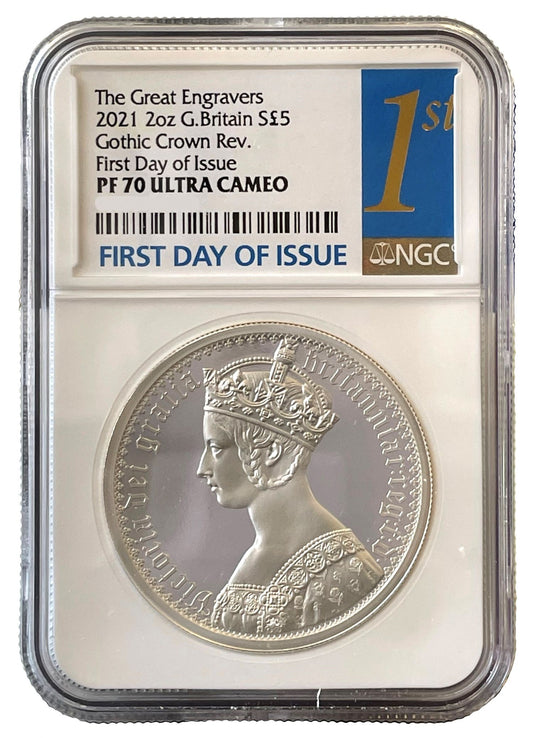FAQs
What makes a coin valuable?
I have coins to sell, what’s the next step?
How will my purchases be shipped?
What happens if I’m not entirely happy with my purchase?
Richard III Penny, York mint, Archbishop Rotherham with T and key by bust
Richard III (1483-85), silver Penny, York mint, struck under Archbishop Rotherham, facing crowned bust, T to left and upright key to right, initial mark uncertain, legend surrounds RICARD DI GRA REX ANG, rev. long cross pattée, quatrefoil at centre, trefoil of pellets in each angle with beaded inner circle, CIVITAS EBORACI, weight 0.70g (Stewartby, p446; N 1686; S 2166-67). Small module flan typical for the type with the usual reverse peripheral weaknesses, portrait showing some strong detail, bold fine, very rare.
Richard III was born on the 2ndOctober 1452 at Fotheringhay castle to Richard the third Duke of York and his wife Cecily Neville. He was created Duke of Gloucester aged just nine on 28thJune 1461 after the accession of his elder brother Edward IV and went on to marry Anne Neville the widow of Edward Westminster the son of Henry VI in 1472. They had a son Edward of Middleham who pre-deceased them both still aged under ten on 9thApril 1484, and seen by some as some sort of divine retribution to leave Richard without a legitimate heir, after the manner in which he ascended the throne. The boy King Edward V, the nephew of Richard was dominated by his uncle as Lord Protector. Edward V was gone by the 25thJune 1483 never to be publicly seen again, and deposed by an act entitled Titulus Regius. Richard had kept postponing the coronation of Edward V after his arrival in London at the Tower on 19thMay 1483. In support of Richard, Ralph Shaa a theologian preached a sermon on 22ndJune 1483 that declared Edward IV had been already betrothed to Lady Eleanor Butler (1436-68) when he married Elizabeth Woodville rendering the marriage invalid and the children issued from it illegitimate. The children of Richard's older brother the Duke of Clarence were barred from the throne by their Fathers attainder who had been killed for high treason. Therefore, the path became clear for Richard who at an assembly of the Lords and Commons on the 25thJune 1483 was declared the legitimate King and he ascended the throne the next day. Edward V and his younger brother were taken to apartments in the inner Tower where at some point they disappeared presumed murdered. Richard was coronated on the 6thJuly 1483 upon which followed two major rebellions, an unsuccessful one in October 1483 led by Henry Stafford the second Duke of Buckingham leading to his beheading on the 2ndNovember, then what turned out to be a most successful one for Henry Tudor with his uncle Jasper, who in August 1485 landed in south Wales with French troops and marched through Pembrokeshire recruiting soldiers along the way, leading on to the Battle of Bosworth Field in Leicestershire on 22ndAugust 1485. Richard became the last English King to die in battle after leading a cavalry charge into the Tudor ranks in an attempt to kill Henry directly, but was unfortunately surrounded in marshy ground and struck down. The body was carried back to Leicester and after a period of display as some sources suggest, was interred at Grey Friars and a monument erected later for which Henry Tudor paid £50 and may have been visible as late as 1612 until the location was lost to history.
Fast forward to the 21stCentury and the modern-day Ricardian Society members working with archaeologists rediscovered the burial site in 2012 exhuming the skeleton, proving by DNA sequencing it was Richard III, and ending with a procession through the streets of Leicester with the remains on 22ndMarch 2015, for a reburial at Leicester Cathedral on the 26thMarch.
The City of York at the junction of the River Foss and River Ouse, about 190 miles north west of London has been an archbishopric since 753 with some gold Thrymsa coins being produced. It was the early minting place of coins of the Kings of Northumbria in both copper and silver as well as the Archbishops of York. The mint name first appears on some of the occupational Viking coinages making the city their capital from 867. In 919 the city passed to the Hiberno-Norse Kings of Dublin and back to the English in 927 when taken from Guthfrith. Between 939 and 943 the Vikings were back in town and again from 947-954 but otherwise remained under English rule with the Norman castle even holding out to a Saxon/Danish occupation in 1069 being relieved by William I who built a second castle on the right bank of the Ouse, the City having been burnt. As soon as William departed the Vikings returned but upon William's return they fled back to their ships and the Normans harried Yorkshire.
The legends translate on obverse as "Richard by the grace of God, King of England" and reverse "City of York".
FAQs
What makes a coin valuable?
I have coins to sell, what’s the next step?
How will my purchases be shipped?
What happens if I’m not entirely happy with my purchase?













